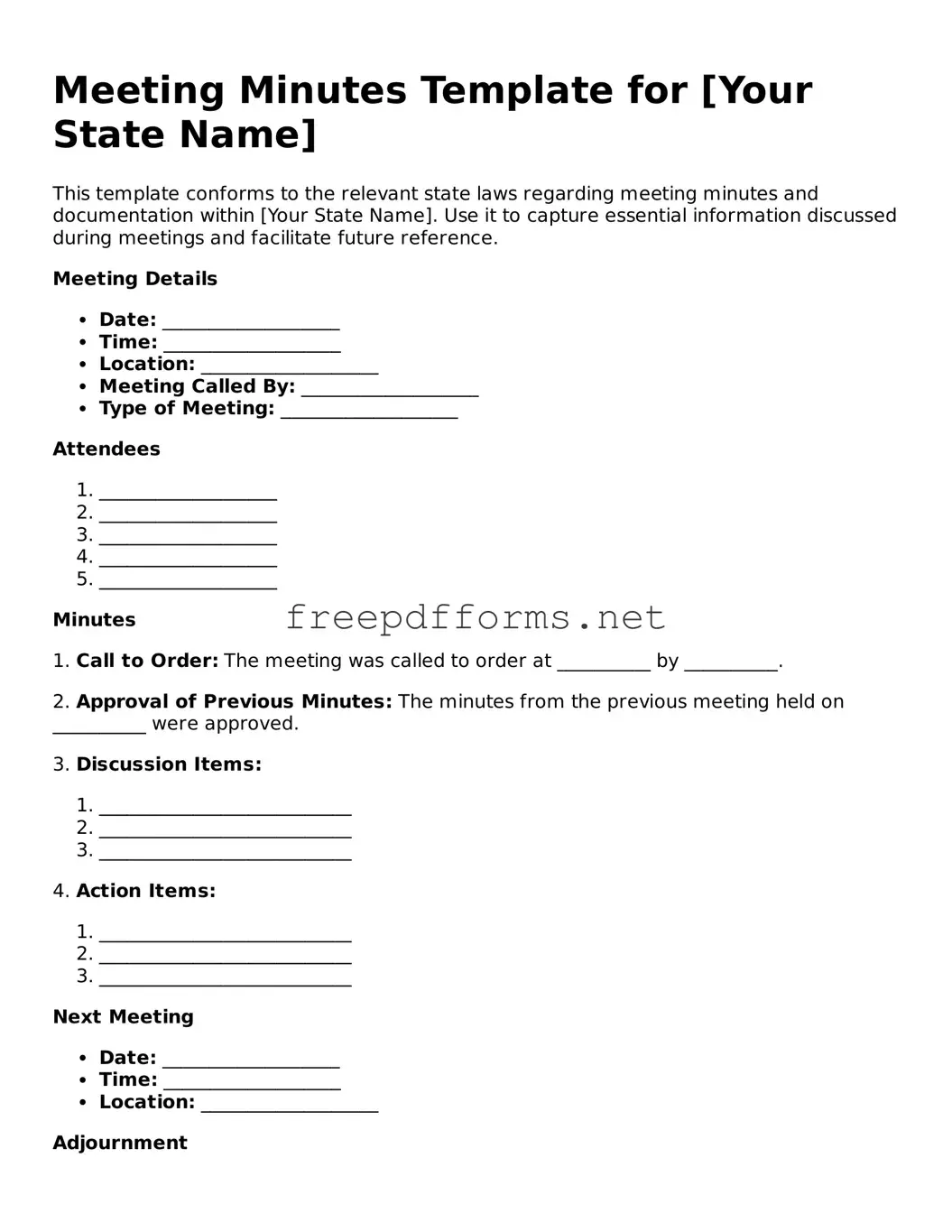Common Questions
-
What are meeting minutes?
Meeting minutes are a written record of the discussions, decisions, and actions taken during a meeting. They serve as an official account of what transpired, providing clarity and accountability for participants.
-
Why are meeting minutes important?
Meeting minutes are essential for several reasons. They help ensure that everyone is on the same page regarding decisions made and actions assigned. Additionally, they provide a reference for future meetings and can be used to track progress on various projects.
-
Who is responsible for taking meeting minutes?
Typically, a designated individual, often referred to as the secretary or minute-taker, is responsible for recording the minutes. This person should be familiar with the meeting agenda and the participants to accurately capture the discussions.
-
What should be included in meeting minutes?
Meeting minutes should include key details such as the date, time, and location of the meeting, a list of attendees, the agenda items discussed, decisions made, and any action items assigned. It is also helpful to note any follow-up meetings scheduled.
-
How should meeting minutes be formatted?
While there is no strict format, meeting minutes are often organized in a clear and concise manner. A common structure includes headings for each agenda item, bullet points for key discussions, and a summary of decisions and action items at the end.
-
When should meeting minutes be distributed?
It is best practice to distribute meeting minutes shortly after the meeting concludes. This ensures that all participants have a fresh memory of the discussions and can act on any assigned tasks promptly.
-
How can I ensure accuracy in meeting minutes?
To ensure accuracy, the minute-taker should focus on capturing essential points rather than transcribing every word. Reviewing the notes with another participant or the meeting leader can help confirm that the minutes reflect the meeting accurately.
-
What if there are disagreements about the meeting minutes?
If disagreements arise, it is important to address them during the next meeting. Participants can discuss any discrepancies and agree on the correct version of the minutes. This process helps maintain transparency and accountability.
-
Can meeting minutes be amended?
Yes, meeting minutes can be amended. If inaccuracies are identified, they should be corrected in the next meeting's minutes. Participants should agree on the amendments to ensure everyone is informed and in agreement.
-
Are meeting minutes considered a legal document?
Meeting minutes can serve as a legal document, especially in formal organizations or when decisions made during the meeting could be subject to scrutiny. They provide evidence of actions taken and decisions made, which may be important in legal contexts.
